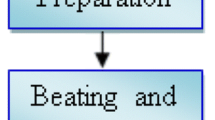Abstract
Prior to treatment, letters dating from 1665–66 were characterised using SEM, FTIR, ESCA or XPS, TG, TMA and DLTMA. All three papers were similar in composition and were basically cellulosic materials. Two which had been sent from Lisbon contained trace amounts of Fe and Cu; these impurities were also present in a letter sent from Dublin. All three letters had been written with iron gall ink. The letter from Dublin had an additional feature in the ink in the form of small bright specks of mica. The papers were examined after conservation treatment using the above same techniques in an attempt both to determine and quantify any changes which had occurred during the treatment process. Scanning electron micrographs showed that propounced changes had occurred to the surfaces of the treated papers. With XPS it was possible to measure the change in the surface composition of the papers which occurred on treatment. It was also found that the treatment reduced the thermal stability of the papers in all three cases.
Zusammenfassung
Vor der Behandlung von Briefen von 1665–66 wurden diese mittels SEM, FTIR, ESCA/XPS, TG und TMA/DLTMA charakterisiert. Alle drei Schriftstücke hatten eine ähnliche Zusammensetzung und bestanden grundlegend aus Zellulosematerialien. Die zwei aus Lissabon abgesandten Schriftstücke enthieklten Spuren von Fe und Cu; diese Verunreinigungen waren auch in dem aus Dublin abgesandten Schriftstück enthalten. Alle drei Briefe wurden Eisengallfarbe geschrieben. Als besonderes Merkmal wies die Tinte des Briefes aus Dublin kleine Glimmerpartikel auf. Nach der Konservierungsbehandlung wurden die Schriftstücke mittels der gleichen Methoden untersucht, um festzustellen, ob und in welchem Ausmaß Änderungen während der Behandlung auftraten. SEM zeigte eindeutige Veränderungen der Oberfläche der behandelten Schriftstücke. Mittels XPS gelang es, die infolge der Behandlung eingetretene Änderung der Oberflächenzusammensetzung der Schriftstücke zu messen. In allen drei Fällen wurde die thermische Stabilität durch die Behandlung gesenkt.
Similar content being viewed by others
References
M. Wentz, ‘Experimental Studies on the Effect of Aqueous and Nonaqueous Treatments on Historic Textiles’ in Historic Textile and Paper Materials, ed. H. L. Needles and S. H. Zeronian, American Chemical Society, Washington, DC 1986, pp. 211–230.
W. A. Deer, R. A. Howie and W. Zussman, An Introduction to the Rock-forming Minerals, Longman, Harlow, UK, 1966.
D.-S. Hon, “Fourier Transform IR Spectroscopy and Electron Spectroscopy for Chemical Analysis-Use in the Study of Paper Documents’ in Historic Textile and Paper Materials, ed. H. L. Needles and S. H. Zeronian, American Chemical Society, Washington, DC 1986, pp. 349–361.
P. Waters, ‘Archival Methods of Treatment for Library Documents’ in Preservation of Paper and Textiles of Historic and Artistic Value II, ed. J. C. Williams, American Chemical Society, Washington, DC 1981, pp. 13–23.
V. Daniels, “Aqueous Deacidification of Paper’ in Conservation of Library and Archive Materials and the Graphic Arts, ed. G. Petherbridge, The Society of Archivists and the Institute of Paper Conservation, London 1980, pp. 121–125.
H. G. Wiedemann, Thermochim. Acta, 100 (1986) 283.
G. Hedley, M. Odlyha, A. Burnstock, J. Tillinghast and C. Husband, Cleaning, Retouching and Coatings, IIC, Brussels, 1990, pp. 98–105.
D. Dollimore and J. M. Hoath, Thermochim. Acta, 45 (1981) 87.
D. Dollimore and B. Holt, Polymer Sci., 11 (1973) 1703.
G. Widman and R. Riesen, Thermal Analysis: Terms, Methods. Applications, Hüthig Verlag, Heidelberg 1987.
G. M. Berry, S. P. Hersh, P. A. Tucker and W. K. Walsh, ‘Reinforcing Degraded Textiles, Part: Properties of Naturally and Aged Cotton Textiles” in Preservation of Paper and Textiles of Historic and Artistic Value, ed. J. C. Williams, American Chemical Society, Washington, DC 1977, pp. 228–248.
J. Blackwell, ‘Infrared and Raman Spectroscopy of Cellulose’ in Cellulose Chemistry and Technology, ed. J. C. Arthur, Jr., American Chemical Society, Washington, DC 1977, pp. 206–218.
A. Liénardy and P. Van Damme, Studies in Conservation, 36 (1991) 155.
A. Strawn, (Private Communication).
Author information
Authors and Affiliations
Rights and permissions
About this article
Cite this article
Odlyha, M., Walker, R.M. & Liddell, W.H. Thermal analysis and the scientific conservation of cultural materials. Journal of Thermal Analysis 40, 285–302 (1993). https://doi.org/10.1007/BF02546579
Published:
Issue Date:
DOI: https://doi.org/10.1007/BF02546579




